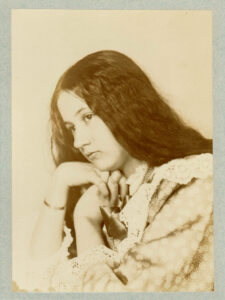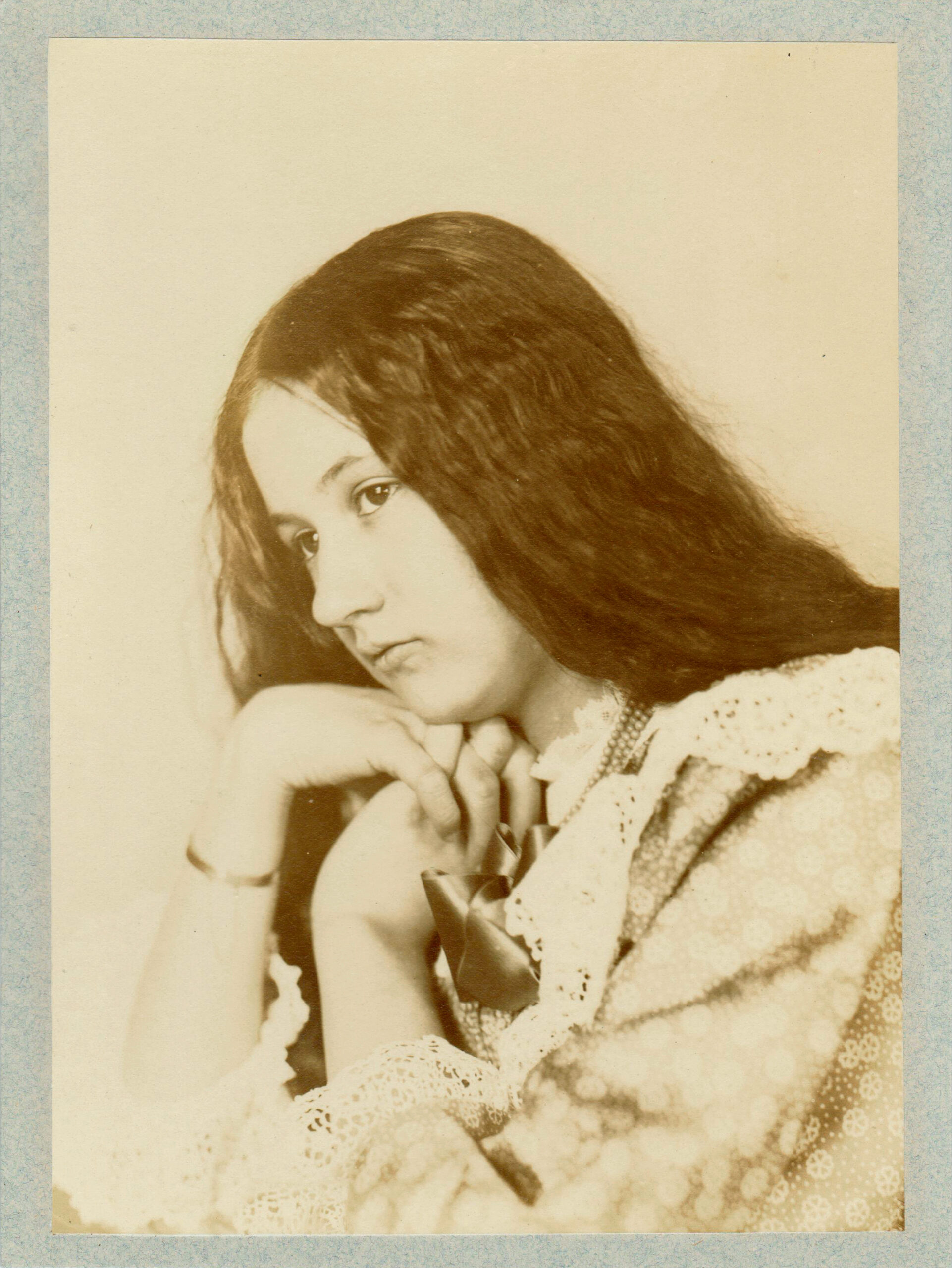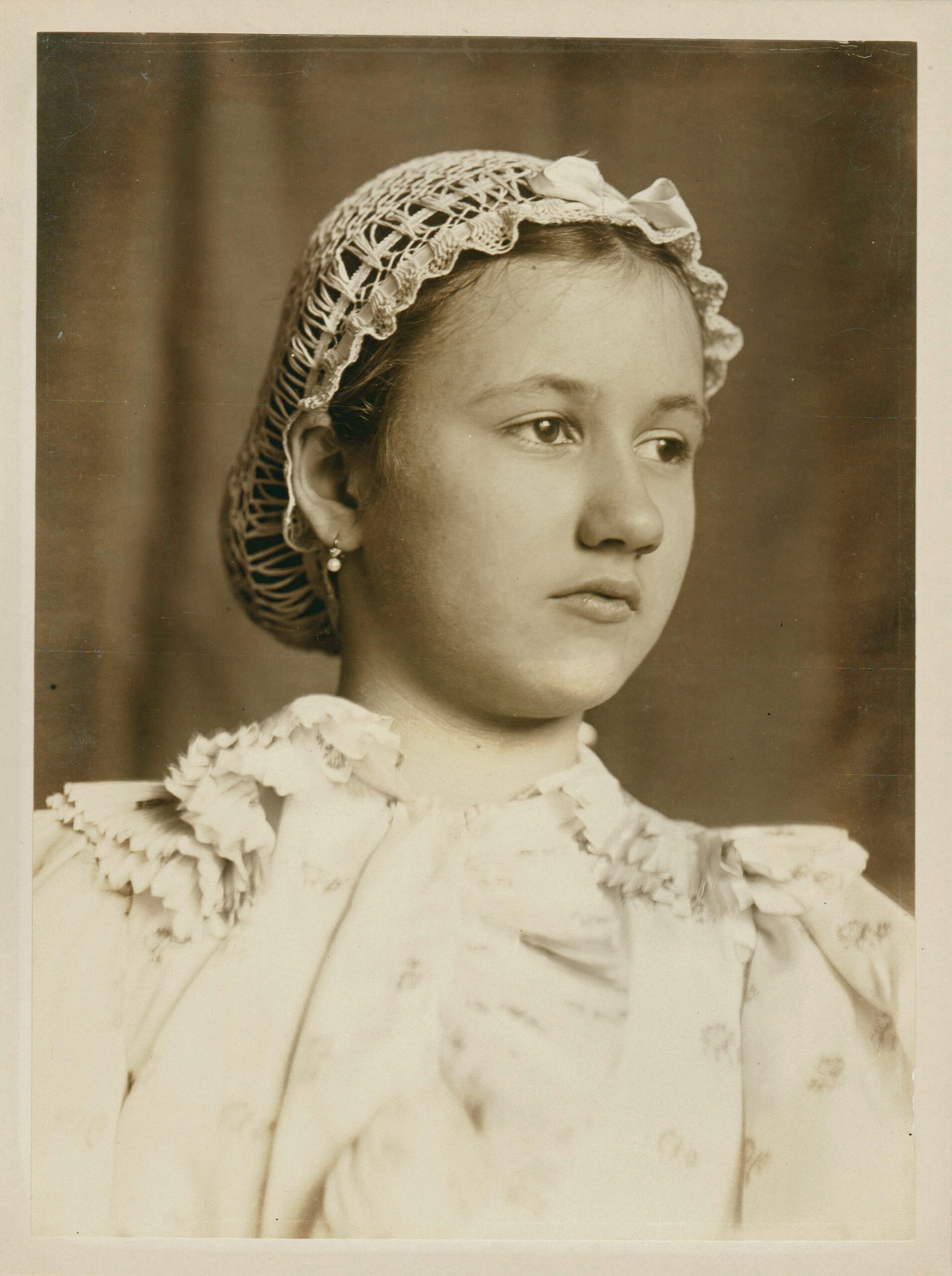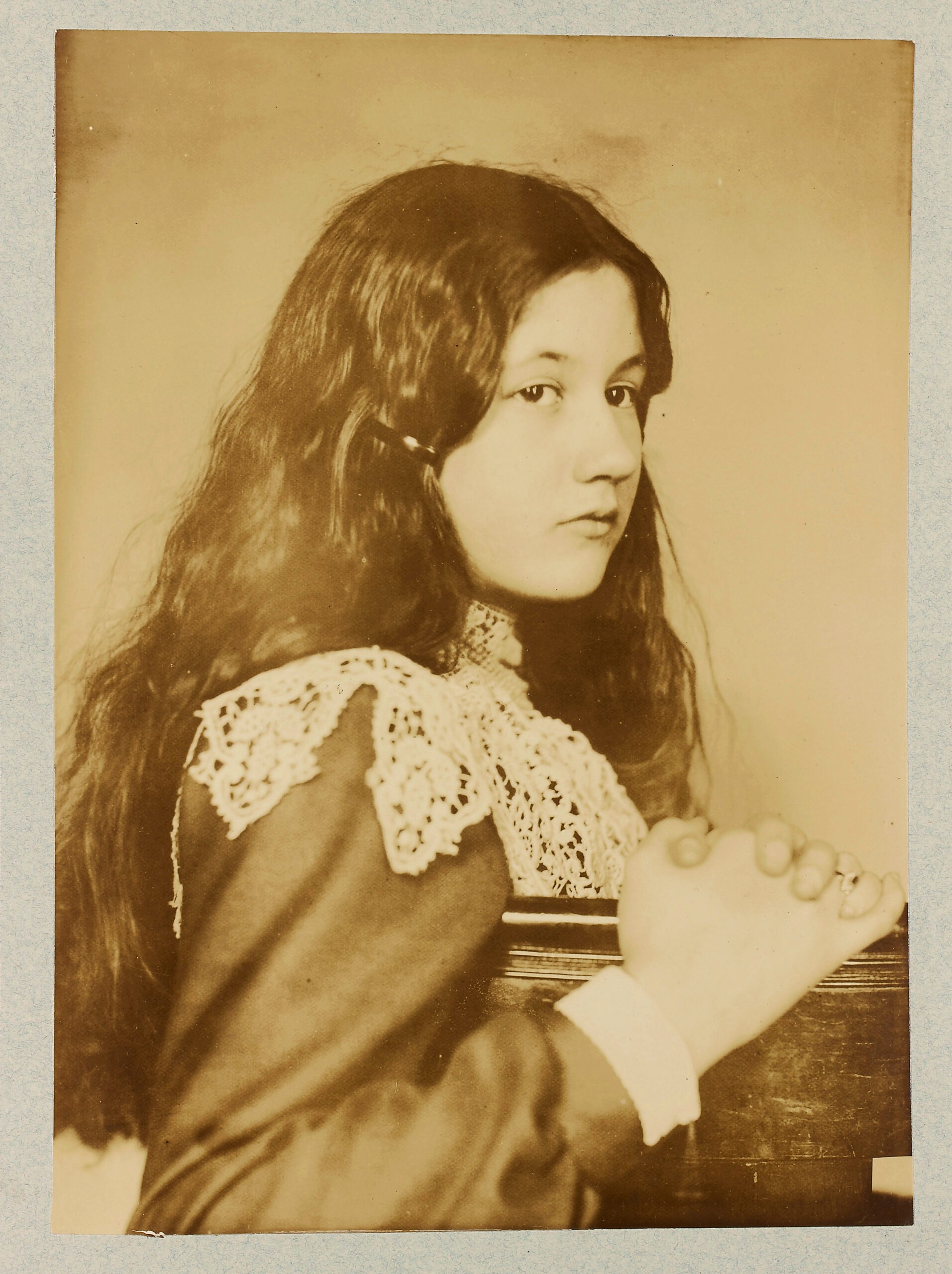Between 1897 and 1902.
3 original photographs, contemporary argentic prints.
230 x 167 mm.
Superb set of 3 original photographs taken by Emile Zola between 1897 and 1902, presenting potraits of his daughter Denise who was aged between 11 and 13.
The 3 portraits gathered here are the following ones:
-Denise de trois quarts profil, tête appuyée sur ses mains jointes, en robe fleurie. (1900-1902).
-Denise de trois quarts profil, assise dans un fauteuil, col de dentelle blanche. (1900-1902).
-Denise de face, le visage tourné vers la gauche, en bonnet de dentelle (1897-1902).
Emile Zola (1840-1902) is an unrecognized photographer. It is only from 1895 that he began photography: he ended the Rougon-Macquart’s cycle and is the most famous writer of that time. It is with passion that he becomes a photographer after he bought ten cameras and set up a laboratory at home. He practises photography in any circumstances: with his family, in the streets of Paris, but also during his exile to London consecutive to the Dreyfus affair, or even, little time before his death, during the 1900 World Fair. Until his death, he will take approximately 6000 negatives, most of them vanished or unpublished, which show the intensity of the photographic work of the author and the energy he spent in it.
Emile Zola’s photographic work, revealed in 1979 by the study dedicated to him by François-Emile Zola, then by various exhibitions, shows the keenness of vision that the writer had on the city and the contemporary world. The family photography takes an important place in Zola’s photographic production.
Emile Zola’s photograhs are extremely rare on the market. Most of them are preserved at the Museum of Orsay and at the museum of Medan.
The museum of Orsay made the acquisition of twenty six portraits of Denise, the daughter he had with Jeanne Rozerot; these were made between 1898 and 1902, date of the writer’s death.
These portraits show the tender affection he had for his daughter. Zola acts here as an artist, making Denise pose in many thoughtful and graceful attitudes, with the consciousness of a professional photographer.
These pieces reflect the great passion Zola had for photography.
« Zola is a photographer as he is a writer: in search for the truth, he moves aside the accessories, refuses the theatrical fashionable poses, and practices no retouch.
His search concerns above all the centring or perspective, and he explores all the formats, uses sometimes plates, sometimes films which just made their appearance. »
Denise Le Blond-Zola (1889-1942), the daughter of Zola and Jeanne Rozerot, linen-keeper and mistress of the writer, kept from his father an unforgettable memory. After the death of the novelist, Alexandrine Zola, the legitimate wife of the novelist took care of her education and introduced her to all the regular visitors of the Tuesdays of the rue de Bruxelles.
When she was 19, she married one of the keenest admirers of Zola, Maurice Le Blond, and had three children, Aline (1909), Françoise (1911) and Jean-Claude (1914). She was endowed with a true literary talent and published in the famous collection of the Bibliothèque rose, under the pseudonym of Denise Aubert, many novels for children, including La Villa dans les dunes (1921) and La Maison forestière (1925). After she collaborated with her husband to the documentation of the edition Bernouard of the Complete works of Zola, she made published at the beginning of the first volume, a biographical study on her father, this developed work became in 1931 Emile Zola raconté par sa fille. She was part with Judith Cladel and Lucie Delarue-Mardrus, of a feminine society of literature, and participated in the preparation of an anthology of French women, which remained unpublished.
The same devotion to Emile Zola united the mistress with the legitimate wife. Thus the latter acknowledged the children, after Zola’s death, and from 1906 they could be called after their famous father.
A precious set of 3 original prints made by Zola himself, in very good condition.
Provenance: Famille Zola, with authentification of the prints.




